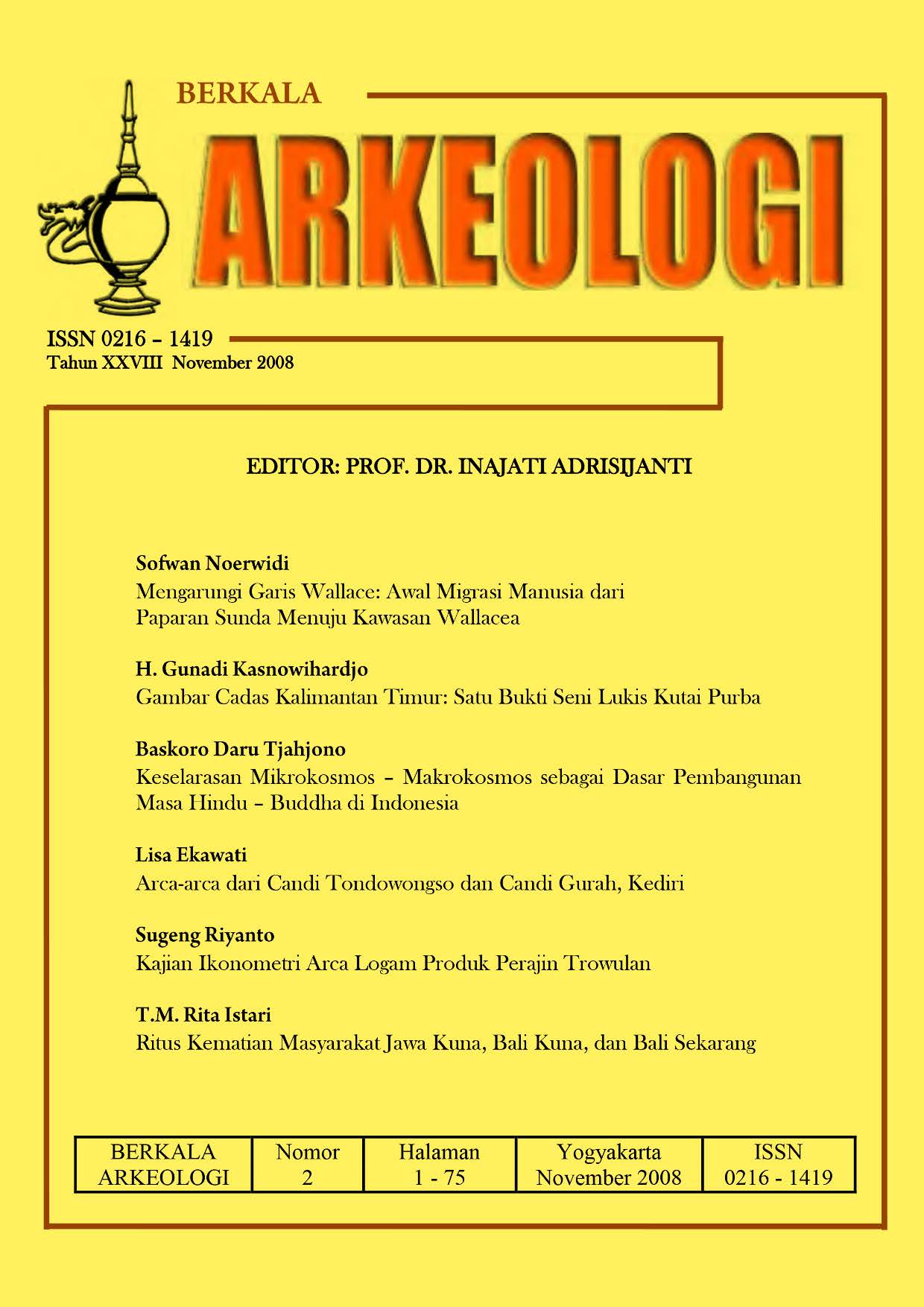MENGARUNGI GARIS WALLACE: AWAL MIGRASI MANUSIA DARI PAPARAN SUNDA MENUJU KAWASAN WALLACEA
Main Article Content
Abstract
Human migration in prehistoric times strongly suggest very complex problems, which could be explained from various perspectives. This article attempts to explain fundamental aspect influencing the pattern of human migration in prehistoric times from Sunda Continent to Wallacean Zone. These aspects are, for example, environment, technology, culture and human being as a decision maker. Reconstructing interisland migration pattern of homo sapiens of hunter gatherer is not as easy as imagining interisland closest lines. This is because the focus of modern human migration is to search for a new area for exploiting natural resources.
Article Details

This work is licensed under a Creative Commons Attribution-NonCommercial-ShareAlike 4.0 International License.
References
Bellwood, Peter. 2000. Prasejarah Kepulauan Indo-Malaysia, Edisi revisi, Jakarta: PT. Gramedia Pustaka Utama
Birdsell, JB. 1977. “Recalibration of a Paradigm for the First Peopling of Greater Australiaâ€, dalam Sunda and Sahul: Prehistoric Studies in South-East Asia, Melanesia and Australia, London: Academic Press.
Bowdler, Sandra. 1993. “Sunda and Sahul: A 30 KYR BP Culture Area ?â€, dalam Smith. MA; Springgs.M and Fankhain, Sahul in Review, Canbera: RPAS, ANU
Butlin, N.G. Tanpa tahun. The Palaeoeconomic History of Aboriginal Migration
Chappel, John. 1993. “Late Pleistocene Coasts and Human Migrations In The Austral Regionâ€, A Community of Culture, the people and prehistory of the pacific, Canberra: ANU printing press.
Fox, Robert B. 1970. The Tabon Caves, Archaeological Explorations and Excavations on Palawan Island, Philippines, Manila: National Museum
Horridge, Adrian. 1995. “The Austronesians Conquest of The Sea-Upwindâ€, The Austronesians: Historical and Comparative Perspective, Canberra: ANU printing service.
Hutterer, Karl L. 1977. “Reintepretating the Southeast Asian Palaeolithicâ€, Sunda and Sahul: Prehistoric Studies in South-East Asia, Melanesia, and Australia, London: Academic Press.
Irwin, Geoffrey. 1992. The Prehistoric Exploration and Colonization of the Pacific, Cambridge: University Press.
Keegan, William F. dan Jared M. Diamond. 1987. “Colonization of Island by Human: A Biogeographical Perspectiveâ€, Advances in Archaeological Method and Theory, No. 10, Hlm. 49-92
Kosasih. 1985. “Lukisan Gua di Indonesia Sebagai Sumber Data Penelitian Arkeologiâ€, Pertemuan Ilmiah Arkeologi III, Jakarta: Puslitarkenas.
Mantra, Ida Bagoes. 2000. Demografi Umum, Yogyakarta: Pustaka Pelajar
Monk, Kathryn A., Yance De Fretes, Gayatri Reksodihardjo-Lilley. 2000. â€Ekologi Nusa Tenggara dan Malukuâ€, Seri Ekologi Indonesia, Buku V, Jakarta: Prenhallindo.
Morwood, Mike. 1998. Stone Tools and Fossil Elephants: the Archaeology of Eastern Indonesia and its Implications for Australia, NSW: UNE printery
Nurani, Indah Asikin. 1996. “Hunian Berulang Situs Gua Macanâ€, Berkala Arkeologi Tahun 16 No. 2, November 1996, Yogyakarta: Balai Arkeologi Yogyakarta
Nusantara, Ariobimo. 1989. “Kronologi Lukisan Dinding Gua di Kab. Maros dan Pangkep, Sulawesi Selatan, Tinjauan berdasarkan analisis kontekstualâ€, Skripsi Sarjana, Yogyakarta: Univ. Gadjah Mada
Simanjuntak, Truman., Bagyo Prasetyo, Harry Widianto. 2001. Prasejarah Gunung Sewu, Jakarta: IAAI.
Spriggs, Matthew. 2000. “Out of Asia: The Spread of Southeast Asian Pleistocene and Neolitic Maritime Culture in Island Southeast Asia and the Western Pacificâ€, ed. Sue O’Connor & Peter Veth: East of Wallace’s Line, Studies of Past and Precent Maritime Culture of the Indo-Pacific Region, Roterdam: A.A. Balkema
Tanudirdjo, Daud Aris. 1991. “Proses Awal Penghunian Paparan Sahul Utara dan Kepulauan Melanesiaâ€, Yogyakarta: IAAI Komda Yogyakarta-Jawa tengah.
Tanudirdjo, Daud Aris. 2000. “Pleistocene Colonization in the Indo-Pacific: The models and the Dataâ€, dalam Sudaryanto dan Alex Horo Rambadeta (eds), Antar Hubungan Bahasa dan Budaya di Kawasan Non-Austronesia,Yogyakarta: PSAP-UGM, hlm. 179-230.

